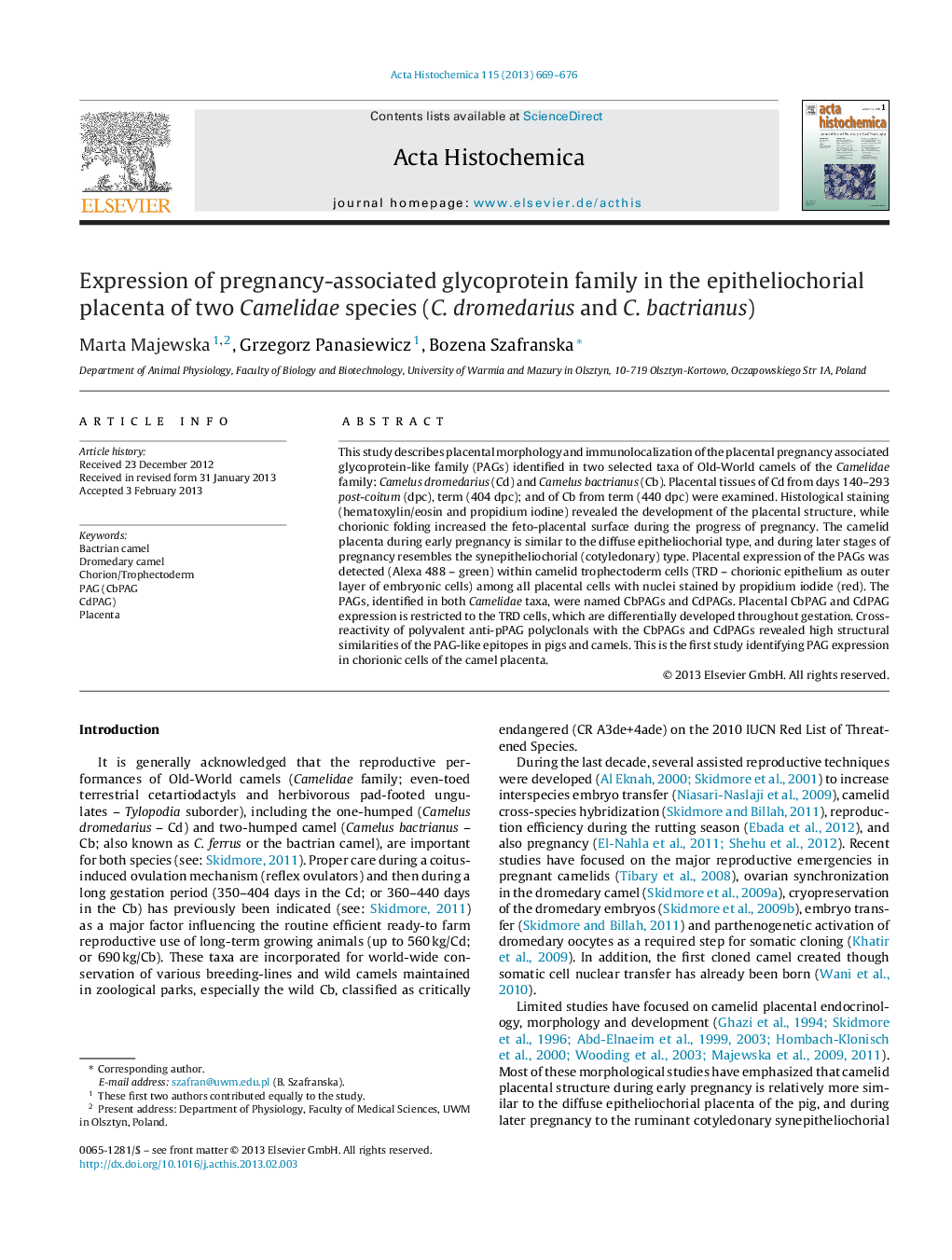| Article ID | Journal | Published Year | Pages | File Type |
|---|---|---|---|---|
| 1923681 | Acta Histochemica | 2013 | 8 Pages |
This study describes placental morphology and immunolocalization of the placental pregnancy associated glycoprotein-like family (PAGs) identified in two selected taxa of Old-World camels of the Camelidae family: Camelus dromedarius (Cd) and Camelus bactrianus (Cb). Placental tissues of Cd from days 140–293 post-coitum (dpc), term (404 dpc); and of Cb from term (440 dpc) were examined. Histological staining (hematoxylin/eosin and propidium iodine) revealed the development of the placental structure, while chorionic folding increased the feto-placental surface during the progress of pregnancy. The camelid placenta during early pregnancy is similar to the diffuse epitheliochorial type, and during later stages of pregnancy resembles the synepitheliochorial (cotyledonary) type. Placental expression of the PAGs was detected (Alexa 488 – green) within camelid trophectoderm cells (TRD – chorionic epithelium as outer layer of embryonic cells) among all placental cells with nuclei stained by propidium iodide (red). The PAGs, identified in both Camelidae taxa, were named CbPAGs and CdPAGs. Placental CbPAG and CdPAG expression is restricted to the TRD cells, which are differentially developed throughout gestation. Cross-reactivity of polyvalent anti-pPAG polyclonals with the CbPAGs and CdPAGs revealed high structural similarities of the PAG-like epitopes in pigs and camels. This is the first study identifying PAG expression in chorionic cells of the camel placenta.
